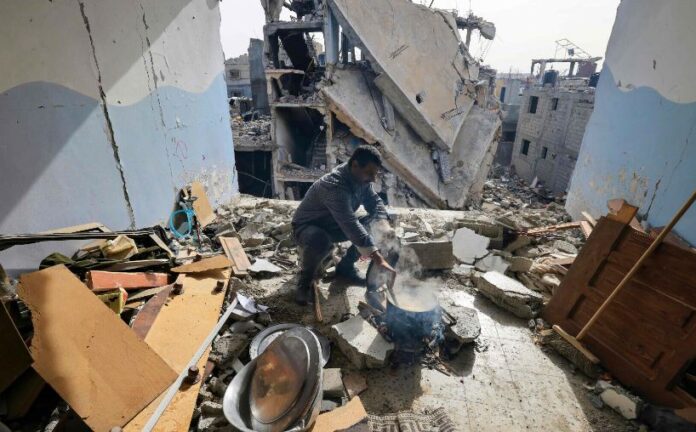UNITED NATIONS, :Amid hopes of a deal to extend the pause in Israeli attacks on Gaza, the UN agency for Palestinian refugees, UNRW, ) reported on Wednesday that humanitarian assistance had reached its shelters in northern Gaza for the first time since conflict erupted last month.“As we drove through Gaza City it was like a ghost town; all the streets were deserted,” said Thomas White, Director of UNRWA Affairs in Gaza.
“The impact of heavy airstrikes and shelling was so visible. Roads are riddled with craters, complicating aid deliveries,” he said.
Wednesday marks the sixth and final day of a truce between Hamas and Israel that was facilitated by Qatar, a rising diplomatic star at the world stage.
Humanitarian officials have urged the two sides to support repeated international calls to extend the pause in fighting, which has facilitated the reported release of at least 85 hostages by Hamas, and of more than 180 Palestinians detained by Israel.
The pause has also enabled humanitarian actors, primarily the Egyptian and Palestinian Red Crescent Societies and UN agencies, to “enhance” desperately needed aid deliveries into and across Gaza, according to the aid coordination office, OCHA.
The UN office’s latest aid update noted that a Palestine Red Crescent Society convoy had reached the north on Tuesday carrying food, medical supplies, water, and non-food items, although the bulk of aid distribution has focused on the south, where most displaced Gazans now live.
In a statement, UNRWA said that on Monday a six-truck convoy had reached Jabalia, the largest and most built-up refugee camp in Gaza, located north of Gaza City.
UNRWA colleagues in Jabalia continue to serve their communities day in, day out, including one of the agency’s sanitation services chiefs – “despite the unspeakable grief of his wife and daughter being killed”, White said.
Some 200 aid trucks have been able to cross into the enclave via Egypt every day since the pause in fighting came into force on Friday 24 November.
Images provided by UNRWA on X on Wednesday showed volunteers unloading sacks of supplies into a warehouse and a static fuel tank being filled.
More than 15,000 Gazans have been killed during Israeli airstrikes, according to the enclave’s health authorities, including about 6,000 children.
In a related development, the head of the UN health agency issued a fresh warning on Wednesday about the high risk of diseases spreading among those displaced by the violence.
Writing on X, formerly Twitter, Tedros Adhanom Ghebreyesus reiterated dire assessments that “given the living conditions and lack of healthcare, more people could die from disease than bombings”.
Latest data from the World Health Organization (WHO) pointed to 111,000 acute respiratory infections, 75,000 cases of diarrhoea and tens of thousands of people suffering from scabies, lice, skin rashes and jaundice.
According to UNRWA, more than 1.8 million Gazans – around 80 per cent of the population in the enclave – have been displaced since Hamas’s attack on southern Israel on 7 October which left 1,200 dead and some 240 taken hostage.
The displaced had left their homes in the north, in line with an evacuation order issued by the Israeli military, issued on 13 October.

















